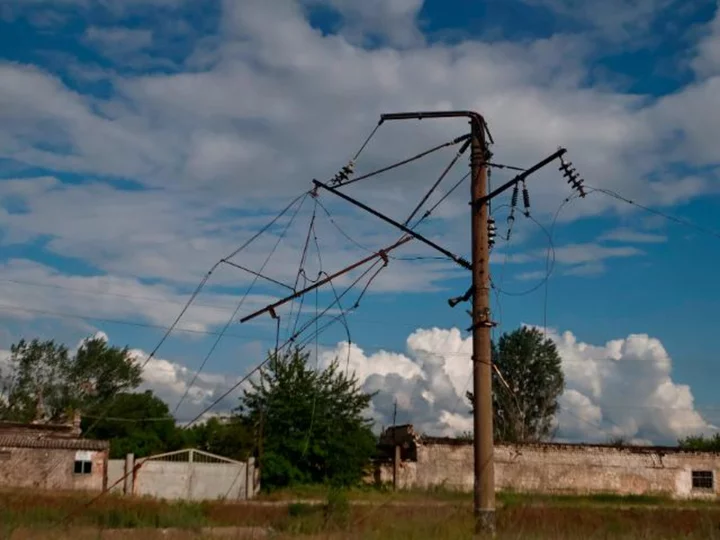Throughout history, humans have proved incapable of resisting the allure of the Earth's extremes — its tallest mountains, deepest oceans, even the outer limits of its atmosphere.
And as technology has evolved, a sprawling industry of extreme tourism has emerged to give people — mostly wealthy people — a chance to stare down death with a considerable safety net. For the right price, you can ascend or descend to the planet's nooks and crannies, briefly occupying spaces that only a handful of people in history have ever been, or will ever be.
Of course, even the best, most expensive safety net can fail.
This week's catastrophic implosion of the OceanGate submersible Titan killed all five of its passengers, many of whom paid a quarter of a million dollars for the opportunity to travel two miles below the water's surface. Across the globe, on Mount Everest, where guided trips cost tens of thousands of dollars at minimum, 17 people have died or are missing in what is likely to be the deadliest season on the mountain in recorded history. This past spring, five people, including 56-year-old Czech billionaire Petr Kellner, died in a crash while heliskiing in Alaska.
Submersible travel, high-altitude mountaineering and heliskiing share little in common apart from two facts: They are taken up primarily by the wealthy, and they have a very narrow margin for error. And when people need saving in some of the world's most unforgiving places, those rescue costs can add up, fast.
The risk is the point
You might imagine that the prospect of an adventure with a higher-than-normal chance of killing you would be a turn-off. But for many well-heeled travelers, the risk is precisely the point.
"Part of the appeal of Everest — and I think it's the same for the Titanic, going into space, or whatever — is risk," said Lukas Furtenbach, founder of mountaineering firm Furtenbach Adventures.
"And I think as long as people die in these places, it's part of the reason people want to go there," said Furtenbach, whose company offers a $220,000 premium option to climb Mount Everest with unlimited oxygen and one-on-one guidance.
After an especially deadly season, Furtenbach says, demand for the following season tends to spike.
Permits for Everest increased significantly in the years after 1996, a season that ended the lives of 12 climbers and became the subject of international media attention, including the bestselling book "Into Thin Air" by Jon Krakauer.
"Every catastrophic season — I would say an average of every three to five years — we can see a big increase of permits issued," Furtenbach says.
"If climbing Everest would be 100% safe, I think this would be the end of the adventure."
Similarly, this week's tragedy in the North Atlantic appears unlikely to curb demand for deep-sea visits to the Titanic. On the contrary, its global prominence may fuel interest.
Philippe Brown, founder of luxury travel firm Brown and Hudson, said his firm still has a long waitlist for its Titanic tours, which it runs in partnership with OceanGate, the sub operator behind the Titan.
"We sense no particular anxiety, no one has canceled anything so far, and inquiries for our services have increased," Brown said. "We have seen a significant uptick in requests" for memberships, which cost between $12,000 and $120,000 a year.
The search for the Titan brought international media attention, and with that, potential explorers got a reminder of the potential to see the Titanic firsthand. Brown said that travelers may become more interested now because they anticipate that the incident will prompt greater regulation and improved technology.
"Sadly, sometimes tragedies are the catalysts to progress."
Who foots the bill for a disaster?
Ethical debates among adventurists and academics have raged for decades about how, and even whether, rescue missions should be carried out for wayward travelers.
When the Titan went missing Sunday, it prompted a massive search operation led by the US Coast Guard with French and Canadian authorities. US officials haven't commented publicly on the cost of the five-day mission, though experts estimate the figure is in the millions.
"When things go awry for the traveler at places of so-called extreme tourism, then the financial cost of rescue and remedy often falls to the emergency services or the charities that are tasked with helping people," said Philip Stone, director of the Institute for Dark Tourism Research at the University of Central Lancashire.
In the case of significant rescue missions, such as the Titan sub incident, "which will run into millions of dollars," taxpayers will ultimately pick up the bill, he said.
"Governments are tasked with protecting lives, and despite the folly of some individuals diving to see the Titanic in an unregulated vessel, these lives are worth saving," Stone added.
In the United States, neither the Coast Guard nor the National Park Service charge the people for their rescue. But some states such as New Hampshire and Oregon will compel hikers who are rescued from state parks to foot the bill for their own rescue, in part to deter inexperienced tourists from venturing too far off the beaten path.
Part of the reason for that, one retired Coast Guard member told Insider this week, is that in a life-or-death situation, worrying over the potential cost of rescue shouldn't weigh on anyone's decision to call for help.
Should people be prevented from taking on such incredible risk if it raises the possibility of an expensive rescue? Victor Vescovo, a private equity investor and retired naval officer, doesn't think so.
"Just because it's expensive, and it's out of the reach of most people, doesn't mean it's in any way a negative thing," said Vescovo, a prominent undersea explorer who has helped design and build submersibles. "And I think it's very difficult to judge people on how they spend money that they may have worked their whole lives to accumulate to use as they see fit."
Not all deep-sea exploration is dangerous, nor is there anything inherently wrong with wealthy people splurging on high-risk adventures, he said.
"No one talks about people spending thousands of dollars to go to amusement park destinations or other tourist locations," Vescovo said. "This is just more extreme."









